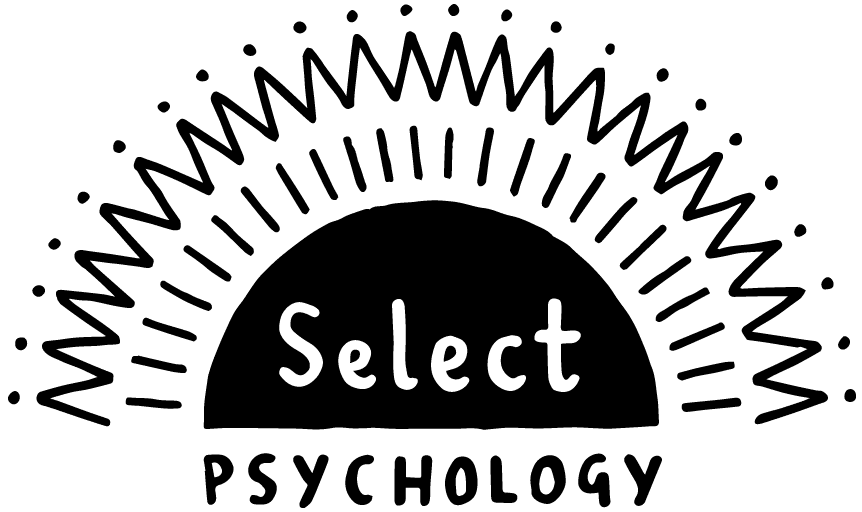ATTACHMENT DISORDER
ARE YOU STRUGGLING WITH ATTACHMENT DISORDER?
If you struggle to form healthy emotional connections, you could be suffering from attachment disorder. This disorder usually stems from early disruptions on bonding. This can cause an individual to have difficulty trusting others, fear of intimacy and cause challenges in regulating emotions. Early intervention and therapeutic support can crucially contribute in improved relational outcomes. At Select, Psychology, our team of professionals is experienced, qualified and trained to provide mental health support best-suited for your requirements, in a safe and confidential environment.
WHAT IS ATTACHMENT DISORDER?
Attachment Disorder is a complex and nuanced psychological condition that originates from disruptions in the critical early bonding and attachment phases between caregivers and individuals. These disruptions can occur due to various factors, such as inconsistent caregiving, neglect, or traumatic experiences during the formative years. This intricate and multifaceted disorder profoundly influences individuals across their entire lifespan.
The early stages of life are crucial for the development of secure and healthy attachments. When these foundational bonds are disrupted or insecurely formed, individuals may struggle with establishing and maintaining relationships throughout their lives. Attachment Disorder manifests differently in children and adults, shaping their behaviours, emotions, and interpersonal dynamics in unique ways.
Symptoms of Attachment Disorder
In Children:
-
- Withdrawn Behaviour: Exhibiting a tendency to avoid physical or emotional closeness, making it challenging to form connections with peers.
- Resistance to Comfort: Struggling to accept comfort or reassurance from caregivers, creating difficulties in establishing secure relationships.
- Difficulty Forming Connections: Facing challenges in forming and maintaining relationships, impacting social interactions with peers.
In Adults:
-
-
- Fear of Abandonment: Experiencing a deep-seated fear of rejection or abandonment, influencing behaviours and perceptions in relationships.
- Avoidance of Emotional Intimacy: Reluctance to engage in emotional intimacy, leading to difficulties forming deep, meaningful connections.
- Challenges in Long-Term Relationships: Navigating difficulties in establishing and sustaining long-term relationships, impacting various life domains.
-
These symptoms, though diverse, share common themes and can permeate various aspects of life, affecting social interactions, academic performance, and overall emotional well-being for both children and adults.
WHEN TO SEEK THERAPY FOR ATTACHMENT DISORDER
You should seek treatment when:
An individual experiences persistent behaviour challenges that interrupt with daily life, social interactions and relationships
Academic struggles such as difficulty concentrating, learning or forming connections with peers
There are frequent emotional outbursts, mood swings or challenges in regulating emotions (emotional dysregulation)
The disorder is affecting crucial aspects of daily life, relationships and overall well-being
Seeking therapy is a proactive step when there is an acknowledgement of the need for professional guidance
THE BEST THERAPIES FOR TREATING ATTACHMENT DISORDER
Attachment-Based Therapy (ABT)
BENEFITS OF THERAPY FOR ATTACHMENT DISORDER
Therapy assists individuals in developing effective strategies for managing and expressing emotions, promoting emotional regulation
Individuals cultivate better social skills, fostering improved interactions and relationships with peers and caregivers
Contributes to increased self-esteem by addressing and overcoming challenges associated with attachment disorder, promoting a positive self-concept
Children benefit from therapy through improved academic performance, as therapy addresses challenges that may impact concentration, learning, and peer relationships
Therapeutic interventions for children enhance the quality of peer relationships, promoting positive social interactions and communication skills
Adults experience heightened emotional resilience through therapy, gaining the ability to cope more effectively with stressors and challenges
Empowers adults to form and maintain meaningful connections with others, addressing challenges related to fear of abandonment and emotional intimacy
THINGS YOU CAN DO TO HELP WITH ATTACHMENT DISORDER
If you are suffering, it is best to seek treatment as soon as you are able to, but but these things can support both adults and children alongside therapy:
Establishing routine and predictability
Provides stability and predictability, fostering a sense of security for children and adults alike.
Encouraging expressive activities
Serves as a creative outlet for emotions, facilitating communication and self-expression
Offering consistent emotional support
Reinforces feelings of security and trust, promoting healthy attachment bonds

HOW CAN OUR PSYCHOLOGY SERVICES HELP WITH ATTACHMENT DISORDER?
We offer a wide range of therapies to help with attachment disorder and give you the tools to cope and understand your emotions. We are a private mental health service with highly trained therapists and no waiting lists.
This is how therapy would work:
Step 1
Get in touch
Step 2
Telephone Consultation
Step 3
Appointment Offer
Step 4
Initial Assessment
Step 5
Your Therapy
Step 6
Feeling Better
HELPFUL THINGS TO KNOW
What does attachment disorder feel like?
Attachment Disorder can evoke a deep-seated fear of rejection or abandonment, creating difficulties trusting others. Emotional turmoil, challenges forming close relationships, and struggles with emotional regulation are common experiences, impacting both children and adults.
What is attachment disorder called in adults?
In adults, attachment-related challenges are often referred to as “Adult Attachment Disorder” or simply “Attachment Issues.” These challenges manifest as difficulties in forming and maintaining intimate relationships, a reluctance to engage in emotional intimacy, and a general fear of closeness.
Do parents cause attachment issues?
Attachment issues can result from various factors, including early disruptions in caregiving, neglect, or trauma. While parenting practices can play a role, it’s crucial to approach attachment disorders with empathy and understanding. Blame is not productive; instead, focus on collaborative efforts to support individuals in overcoming these challenges.
In conclusion, Attachment Disorder is a nuanced and pervasive condition that necessitates tailored interventions for children and adults. Recognising symptoms, understanding the importance of therapy, implementing effective strategies, and seeking consultation with mental health professionals are crucial steps in supporting individuals on their journey towards building secure, healthy relationships.
What is the difference between ADHD and autism?
ADHD is characterised by attention, hyperactivity and impulsivity challenges, impacting daily functioning. Whereas autism involves difficulties in social communication, repetitive behaviours and sensory sensitivities. While both are neurodevelopmental disorders, their core features differ, necessitating accurate diagnosis for effective support and intervention. Comorbidity can occur, with individuals experiencing both conditions.

